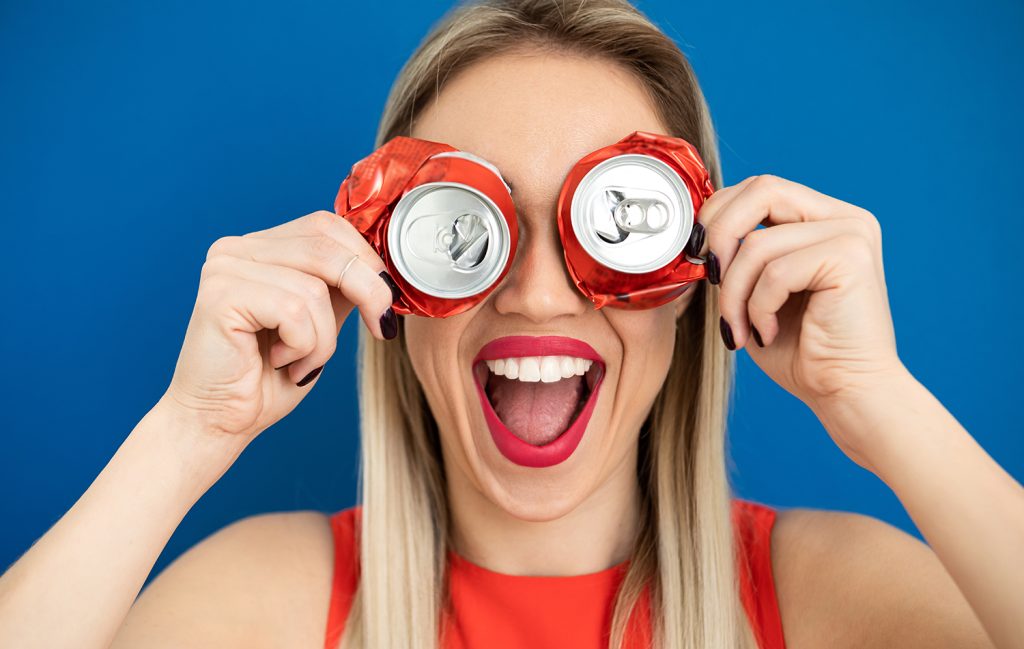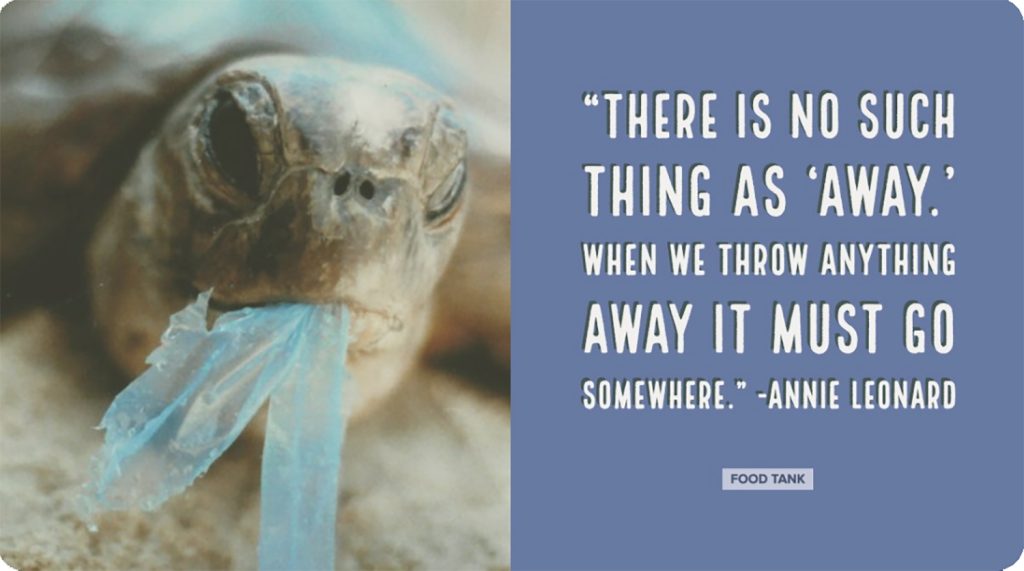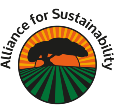
By Alliance Communications Coordinator Amy Durr
There is a kind of moral beauty to people who recycle, like they glow with a vision of a restored earth. An earth where there is no waste, no landfills, no giant plastic islands floating in the oceans, no dead birds with guts full of plastic. There is balance on this reinvigorated planet, and respect. Clean water and air.
We want to celebrate you this National Recycling Month and encourage others to join you, but want you to know that what you don’t know about recycling can hurt the planet.
I am a huge fan of Reduce – Repair – Reuse – Compost – Recycle, a phrase that seems almost trite today. But it also holds a million ways to love this wondrous planet while tackling climate change, preserving resources, creating jobs, reducing waste and saving both energy and money for our government.
Plastic bags of trash exhaust me. But the promise of recycling is rejuvenating. To a point.
Is Recycling Just Another Empty Promise?
Recycling could be one path to sustaining life, but “confusion, inconsistent rules, and lack of access is keeping recycling rates low,” shares Keep America Beautiful (KAB).
The great news is that “support for recycling in the US cuts across age groups, geographic regions, and political affiliations,” according to a nationwide survey conducted by The Harris Poll on behalf of Keep America Beautiful® for America Recycles Day®. It’s wonderful that most Americans practice recycling and understand that recycling is a civic commitment and a societal good.
But the bad news is that only about 32% of household waste is recycled or composted, according to the EPA, a figure that has remained steady for nearly a decade, shares KAB.
Confusion Reigns, Trash Remains – The Inconvenient Truth About Recycling
The truth is that recycling is confusing, says the Earth Day website.
“There’s a lot of different rules, and even if there’s an understanding of what can be recycled, there may be different rules in different jurisdictions,” says Jeffrey Raymond, chief of communications and community affairs for Baltimore’s Department of Public Works.
Raymond continues, “In terms of communicating all this, we have to walk a line between getting people to make recycling as simple as possible, and not making it so intimidating and difficult that they don’t recycle at all.” I feel exactly that way, even though I’m quite knowledgeable and committed to recycling. That’s a problem.

WIIFM (What’s In It for Me?): The Case for Becoming a Recycling Super Star
It may not save your household money, but recycling saves all of us as taxpayers money, creates jobs, and is perhaps one of the most effective ways to combat the climate crisis. Truly committed companies like Eureka Recycling and TerraCycle are able to find markets for high quality recyclables.
95% of waste isn’t recycled, shares TerraCycle. Not because it’s impossible, but because it’s not profitable. Traditional recyclers only accept materials that are profitable to recycle, based on their recovered material value alone, like aluminum and cardboard.
Everything else costs more to recycle than the resulting materials are worth. We as consumers and waste producers need to support new business models that avoid the manufacture of un-reusable, hard-to-recycle products. But the truth is we need to go upstream to create a zero waste system in which everything that’s manufactured can be reused, composted or recycled.
7 Steps to Recycling Heaven – Stop Trashing the Planet with Your Recycling
Have you looked in a public recycling bin lately? Did you notice how much trash there was? Conversely, how many recyclable cans and bottles were in the trash can? And the winner at most public events where there happens to be a compost container is how many recyclables and how much plastic and trash there are. Houston, we have a problem.
Clearly, recycling can be complex and sometimes confusing, but it really isn’t that complicated if you understand a few basic things. And it helps to pay attention to your municipalities’ newsletters with recycling updates because the market and industry are always changing.
The Earth Day website shares 7 Tips to Recycle Better. I learned a few new things, and perhaps you will as well.
- No bags. Like really, no bags. Grocery bags dissolve into potentially harmful microplastics and, in the case of ingestion or entanglement, hurt and kill animals. They’re pretty much the worst. Even though these bags are recyclable, you put them in a special plastic bag drop-off (like at your grocery store), and NOT your curbside bin.
Plastic bags put into recycling is a recycler’s worst nightmare because just a single plastic bag can mess with the equipment and cause the complete shut down of a high speed recycling line.
Author Note: Every single week I watch my neighbors put out their recycling in trash bags as opposed to the recycling bins we are given. That’s a total waste of a plastic bag. But worse, anything in a plastic bag will not be recycled, and will go straight into the trash. To tell you the truth, I find that really depressing. Use the bins! - Small things are big problems. Don’t recycle anything smaller than a credit card, including straws, bottle caps, coffee pods, plastic cutlery, paperclips and a million other tiny things that creep into our daily lives. These objects are too small to be sorted and drop through screens directly to the trash or somehow remain and jam recycling equipment.
Author Note: The truth is you need to leave the bottle caps on the bottles they came from because they will be recycled. Even though they’re a different type of plastic, they will ultimately be separated and captured during bottle remanufacturing. - Ideally, try to have them as clean, empty and dry as possible. Food waste can contaminate whole loads of recyclable material, rendering them useless and fast-tracking them to landfills. In the US, food waste contaminates 25% of our recycling loads.
Author Note: I never knew why recycling should be clean and dry, but it makes sense! I’m good about rinsing but not about drying. New habit!
One more good reason is that in single sort recycling, where paper, metal and plastics are comingled, the drier everything is the more likely the paper will be able to be recycled. In some cases, 10% of the recyclable paper is lost from cross-contamination, including liquids.
In Sweden, people have to sort all of their recyclables into 22 different types, which assures extremely high quality recyclables, especially with paper. So do we even “recycle”? - Combined materials are trash. Recycling only works when like materials are together. Unfortunately, items like plastic-coated coffee cups, laminated paper and paper-bubble wrap envelopes from the mail can’t ever be separated, which means they’re trash.
- Know your plastics. Not all plastics are treated equally and just because there’s a recycling symbol doesn’t mean it’s recyclable. Rigid plastics are recyclable, labeled by resin codes 1 through 7. Nearly all recycling centers will accept plastics #1 and #2 without a problem, and some will accept #5, which is polypropylene.
However, the worst are #3 (PVC) and #6 (polystyrene), which are difficult or impossible to recycle in standard programs. #7 usually indicates something that is compostable if it’s marked that way and you have a separate organic waste collection system.

- Stop wishcycling. When it comes to recycling, one of the worst things you can do is wishcycle. That’s when we optimistically put non-recyclable objects in recycling bins. When we do this, we contaminate whole loads of otherwise recyclable materials.
Cities have certain thresholds to meet when they send their recyclables to third-party waste management companies. If they surpass these thresholds — in other words, if there’s too much trash mixed into the recycling load — that entire load could end up in a landfill.
Author Note: I am so guilty of this. We cannot hope that things we think should or could be recyclable actually are. Instead, we can adjust our buying habits and support work to develop new processes and markets for recycled plastics.
One of the many controversial and location-specific topics of debate are pizza boxes. Clean pizza boxes are recyclable in most recycling centers, but you need to check. You can rip the clean tops off to recycle. However, pizza boxes that have oil or cheese are most often NOT accepted as recycling, BUT can be part of household organic waste collection for composting. The same is true for most soiled paper plates.
Cardboard tubes from toilet paper and paper towels are such low quality paper that they should be composted rather than recycled.
And there is a big debate about whether frozen food boxes can be recycled or composted, as their sometimes plastic coatings can be a problem. Ask your city or recyclers.
When it comes to metals, most recycling programs only want tin and aluminum cans and foil (but you need to ask), but don’t want other types of metal. Can those be recycled? Yes, at metal recycling facilities that exist in almost every community. And they will even accept your old electric wires and Christmas tree lights, because the copper wire is so valuable. And you’ll even be paid for it. - Teach yourself. There’s a bunch of stuff we accumulate over our lives — batteries, electronics, paint cans, toys, clothing, wood — and they, unfortunately, all have separate drop off centers or special instructions for recycling.
Normal household batteries can be included in many household recycling programs, but you need to ask. The big exception are rechargeable batteries (like lithium ion) at the end of their life that need to be separated (because they contain invaluable but hazardous heavy metals), and recycled at most big box stores that sell them.
Author Note: This to me is a strong case that our children should be learning a LOT about recycling in school. For the rest of us, read the materials your municipality puts out about recycling and believe them.

Let’s Live the Truth Together that “There’s No Such Thing as Away”
“There is no such thing as ‘away.’ When we throw anything away, it must go somewhere,” said The Story of Stuff author Annie Leonard. Trash does not miraculously disappear. Recycling holds promise, but its promises are ones that we all need to help fulfill.
Together we can co-create a zero waste world.
